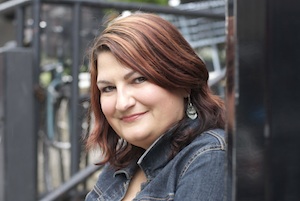08 Feb What the Hearing Impaired Can Tell You About Captioning: Part 2!
We’re thrilled to have Steffani Cameron, caption timer here at Line 21, take over our newsletter and blog for the second time this year. In May, she shared part one of a two-part series. Here’s part two! Welcome, Steffani!
I’ve worn hearing aids all my life so it’s apt that I’ve spent much of the last 14 years working as a captioner at Line 21. Today, I’m passionate about doing it well. When Line 21 asked me to tell you about how hearing-impaired folks like me perceive captioning, I was thrilled. In the conclusion of my two-part blog post, I’ll be sharing with you a few of my thoughts on phrasing and positioning.
Good captioning also understands phrasing and how that matters. With a maximum of 32 characters a line, captioning is kind of the hipster’s answer to Twitter. You think 140 characters is too little space to say anything of substance? Try 64 characters for the industry standard 2-line caption.
When those short captions are flying past, how the lines are split and where they leave off really impacts how easy it is to balance watching the show with reading the dialogue. We viewers appreciate when captions aren’t split in the middle of a phrase. When every two-line caption makes sense in and of itself, it means we don’t miss a beat, instead of our subconscious failing to marry together two halves of a phrase when one’s not on-screen anymore.
With an average of 500-700 captions per 22 minutes, the less work we have to do, the easier we can enjoy your show.
Positioned captions can help a lot when it’s a drama, but if done poorly, they make things even harder to follow. When the caption is on top of the person speaking, it makes logical and visual sense. When it’s in a completely different place and this happens repeatedly, it’s another reason to turn the captioning off, or worse, switch to a show with good captioning.
For those of us with acute hearing loss, poor captioning is a great reason not to watch a show. If I can only follow 50% or less of what I’m watching because I can’t hear dialogue or it’s unclear to me, or it’s poorly synced, I’ll turn to something else, even if I’m watching network shows streamed on the web.
For us, captioning isn’t something you’re doing to meet a broadcast requirement. For us, you’re making it possible to truly enjoy what you’re creating, and we notice when you care enough to have great captioning by people who understand how we need to read it.











